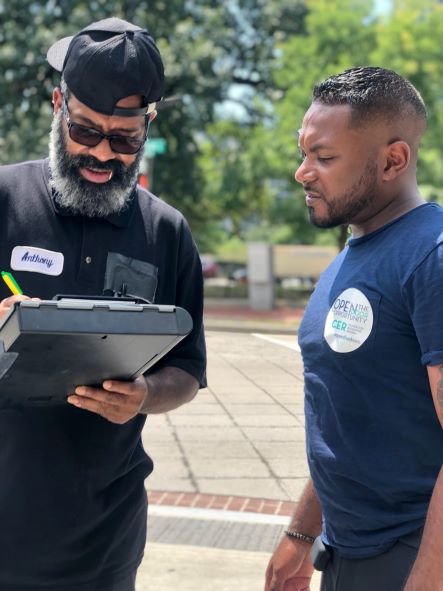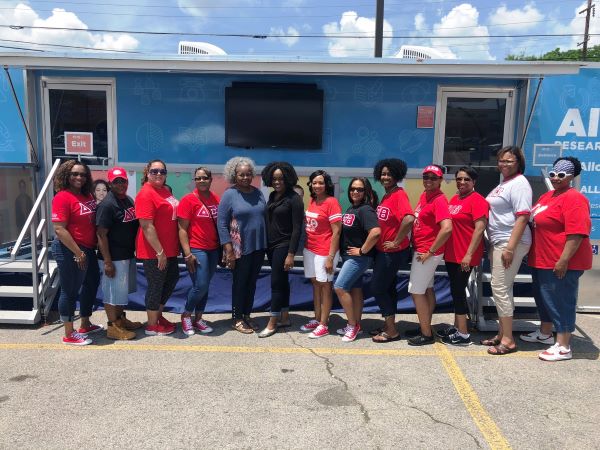Did you know that 71 percent of consumers expect companies to deliver personalized interactions? Even more—76 percent—get frustrated when this doesn’t happen according to a recent report by McKinsey & Company. Indeed, “the closer organizations get to the consumer, the bigger the gains.”
At Montage, we have long believed that getting closer to the audiences our clients are trying reach and building authentic relationships through meaningful, relevant engagements is the most effective way to help them achieve their goals. Rooted in these four practices, our approach has proved an effective road map for reaching and engaging audiences on a grassroots level.
Audience Research

Understanding people is core to what we do and how we do it at Montage. It’s also essential to creating meaningful connections in diverse communities. That’s why, before every brainstorm and big idea, we root ourselves in research.
While our methods vary by project, we rely on data and information from secondary sources as well as quantitative and qualitative proprietary research to create holistic audience assessments. Surveys, focus groups, polls, interviews, and ethnography all play a role in evaluating an audience’s thoughts, feelings, beliefs, existing perceptions, media consumption habits, and barriers to behavior adoption.
Take our work with the Center for Education Reform (CER), for example. Looking to secure signatures from Washington, D.C. residents in support of school choice, Montage used secondary sources like census data to identify the communities most affected by the issue—predominantly Black and Latino neighborhoods with high population density. Our team then observed the realities of daily living in the relevant communities. Leveraging ethnographic research, Montage developed a grassroots advocacy campaign to reach audiences in the places they frequent—metro stations, bus stops, and public venues—with facts that were directly relevant to their lives. Applying audience understanding, Montage helped CER not just meet but exceed their campaign goal.
TIP: Research your audience to determine their needs and desires. Start by gathering data on demographics, interests, and behaviors. Then dive deeper. Ask questions and observe behaviors to create a targeted audience profile.
Diversity, Equity, Inclusion, and Accessibility

Diversity is one of Montage’s greatest strengths. Our team’s varied identities, beliefs, experiences, and language capabilities are instrumental to the development of culturally relevant marketing solutions. They also support authentic connection at the grassroots level.
We see this play out every day in our work for the National Institutes of Health’s All of Us Research Program. Montage creates and manages outreach and engagement activities, communications, and events to support the inclusion of African American/Black, Hispanic/Latino, Asian American Native Hawaiian Pacific Islander, LGBTQ+, disability, and rural communities in health research. Recognizing that these populations have traditionally been underrepresented or excluded from clinical trials, it is essential that our work speaks directly and authentically to each community.
To do so, Montage develops outreach methods and materials to suit different identities, learning styles, language proficiencies, and physical abilities. A team of full-time Engagement Counselors—themselves members of priority communities—collaborate with grassroots, ethnic, minority, faith-based, special interest, health provider, and community interest groups to engage audiences via trusted sources. By reflecting the ethnicities, speaking the languages, understanding the customs, and accommodating the neurodiversity of our audiences, we are infinitely better equipped to build trust and establish meaningful relationships with communities of all kinds.
TIP: While presenting information in English might be easiest, it’s not always effective—or inclusive. Make the effort to speak the language(s) of your audiences. Invest in translation or transcreation services and multilingual staff to support your work.
Co-Creation with Key Audiences
We are all bombarded with marketing messages. So much so, in fact, that every ad, post, and promotional message starts to look and sound the same. The key to creating relevance and making a lasting impression lies in reaching an audience on their terms. Montage facilitates authentic connection through co-creation.
Co-creation incorporates audience input from beginning to end. In our work with Pyxis Partners, for example, Montage assembled a participant-centered design team consisting of researchers, doctors, and members of ethnic minority, faith-based, and disability communities who influence and review the engagement tools and materials we create.
Montage also practices transcreation when looking to reach non-native speakers. Rather than translating a flyer from English to Spanish, transcreation involves composing both flyers at the same time, ensuring that key messages resonate when read in either language.
Through co-creation and transcreation, Montage delivers added value to our clients, helping them establish meaningful connections and positioning them as supporters of accessibility and inclusion.
TIP: Assemble a trusted team of people who reflect your key audiences. Ask for their input and feedback on strategies and materials to enhance relevance and eliminate false starts.
Personal Touch
A little empathy can go a long way, and what better method to exhibit it than through face-to-face activities? The opportunity to connect directly with audiences is one of the many reasons why Montage got its start in live experiences and events. Sharing a smile, actively listening, asking and answering questions, and holding a dialogue can break down barriers other communications methods cannot.
But you don’t have to host a live event to relate and connect with audiences. We have achieved similar results through virtual events, virtual reality experiences, and the use of personalization and dynamic content in digital communications. Each allow us to tailor our outreach to people’s unique needs and interest—and to create connections that last.
TIP: Derive quantitative insights from data (conversations, clicks, conversions, etc.), but don’t forget to pay attention to the intangibles. Are audience members asking questions, engaging in animated conversation, demonstrating positive body language? These are all positive signs that you’re making connections.
Creating meaningful connection within diverse communities isn’t easy. Nor should it be—all people deserve marketing solutions that meet their needs. It requires consistent, collaborative, and authentic grassroots outreach and culturally relevant communication. But as researcher, author, and educator Brené Brown reminds us: “Connection is why we’re here. It gives purpose and meaning to our lives.” We couldn’t agree more.
We’re ready to help you create connection with the communities that matter most to you. Contact us at info@montagemarketing.com to start the conversation.